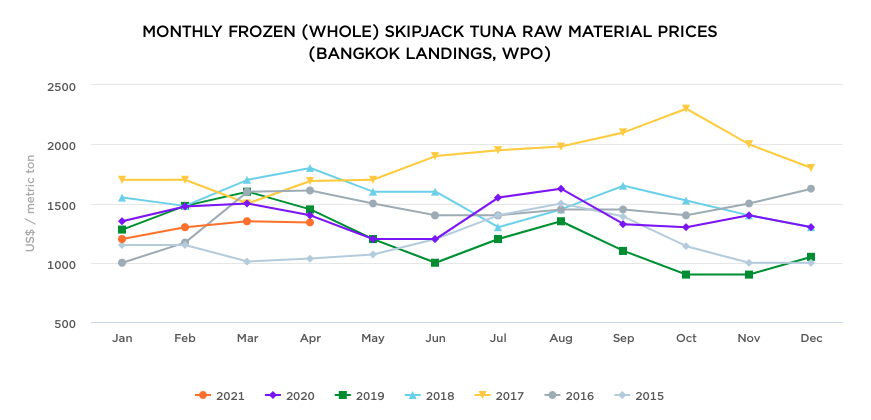Canned tuna consumption increases during the pandemic
The COVID-19 pandemic has changed the consumption behavior of consumers who faced lockdowns that prevented them from dining out and were forced to make more home-cooked meals. The usual trip to grocery shops had to be reduced as well to a few times in a month complicating the shoppers to bulk buying large amounts of perishables. As consumers spend more time cooking at home, they have to choose less perishable groceries and with a longer shelf life, preferring frozen and canned foods. Fresh tuna consumption was directly affected by this trend, as it is most consumed in the hospitality industry in the form of sushi, sashimi, and steaks. But canned tuna consumption increased in general households as an easy, healthier ready-to-eat option.
In the year-to-date comparison with the first eight months of 2019 and 2020
Both whole fresh tuna and the frozen tuna fillet export decreased significantly during the first eight months of 2020. In terms of volume, the whole fresh tuna exports decreased from 59,000 MT to 39,000 MT, with the main contributors to the decrease being Spain, Mexico, and Taiwan. The global frozen tuna fillets exports decreased from 94,000 MT in Jan-Aug 2019 to 73,000 MT in Jan-Aug 2020. From the top frozen tuna fillets exporting countries, Indonesia was the only one to increase the export by 2,000 MT, becoming the world leader in exports for this period.
The high valued fresh whole tuna and frozen tuna are mainly used in the hospitality industry, which was most affected by the change in consumption habits caused by the pandemic, leading suppliers to target the processing industry. As a result,
Global exports of prepared and or preserved tuna, the main ingredients for canned tuna, increased by 10.5% in the first eight months of 2019 and 2020. The main increases in exports were observed from the main canning countries: Thailand, Ecuador, China, and the Philippines. Indonesia decreased its exports by 6.4% during the period and lost its position as the sixth exporters of preserved tuna to the Philippines.

Source: Tridge, FAO
Global export volume for frozen whole tuna, used in wholesale and industries, increased slightly by 1.9% in Jan-Aug 2020. The whole frozen tuna is usually used by restaurants, hospitality, wholesalers, and the processing industry. Although the demand for restaurants has decreased, the processed and portioned tuna on retail have increased the demand, keeping the exports for the segment stable. A notable increase of 47% in exports is observed by China during the period.

Source: Tridge, FAO
Prices
According to a major tuna processing company in Thailand, the average price of frozen whole skipjack tuna for raw materials in Bangkok of the first quarter of 2021 is shown to be 9.3% lower than the average pricing in the same period last year. This situation could be related to the larger availability of tuna from the Eastern Pacific in the first months of the year. However, due to high demand expectations for canned tunas and limited supply due to Covid restrictions, the prices are expected to increase in 2021.

Source: Thai Union
Sources:
- FAO. “Global demand for non-canned tuna softened”.
- FAO. “Strong global trade for canned tuna persisted throughout 2020”.
- FAO. “Trade Statistics - Q1 2021”.
- Thai Union Group PCL. “Raw material price trend”.
- Undercurrent. “Strong canned tuna demand in 2020 boosts Thai exports to the US”